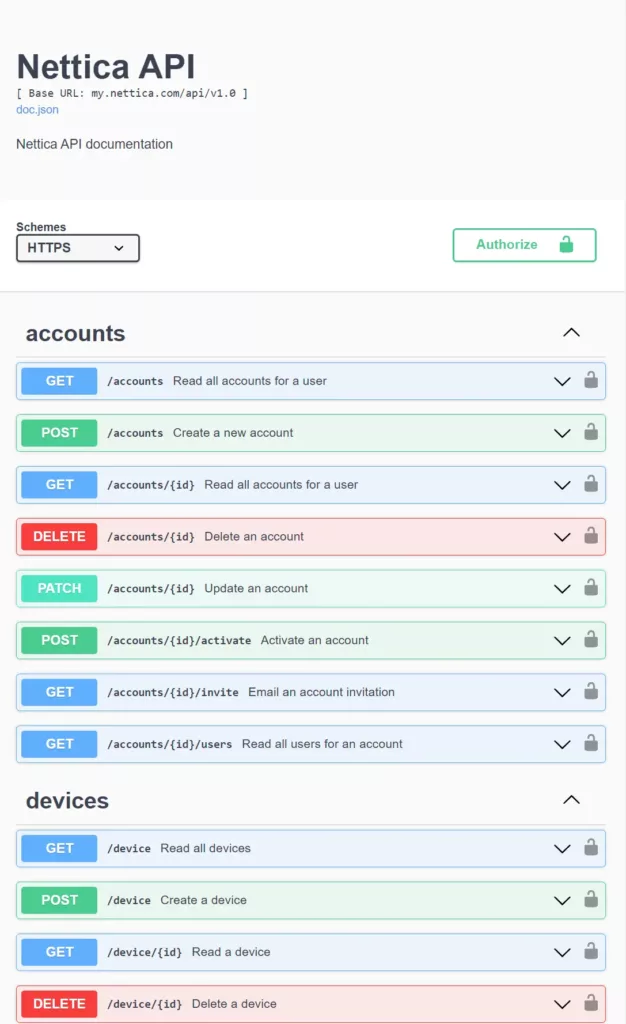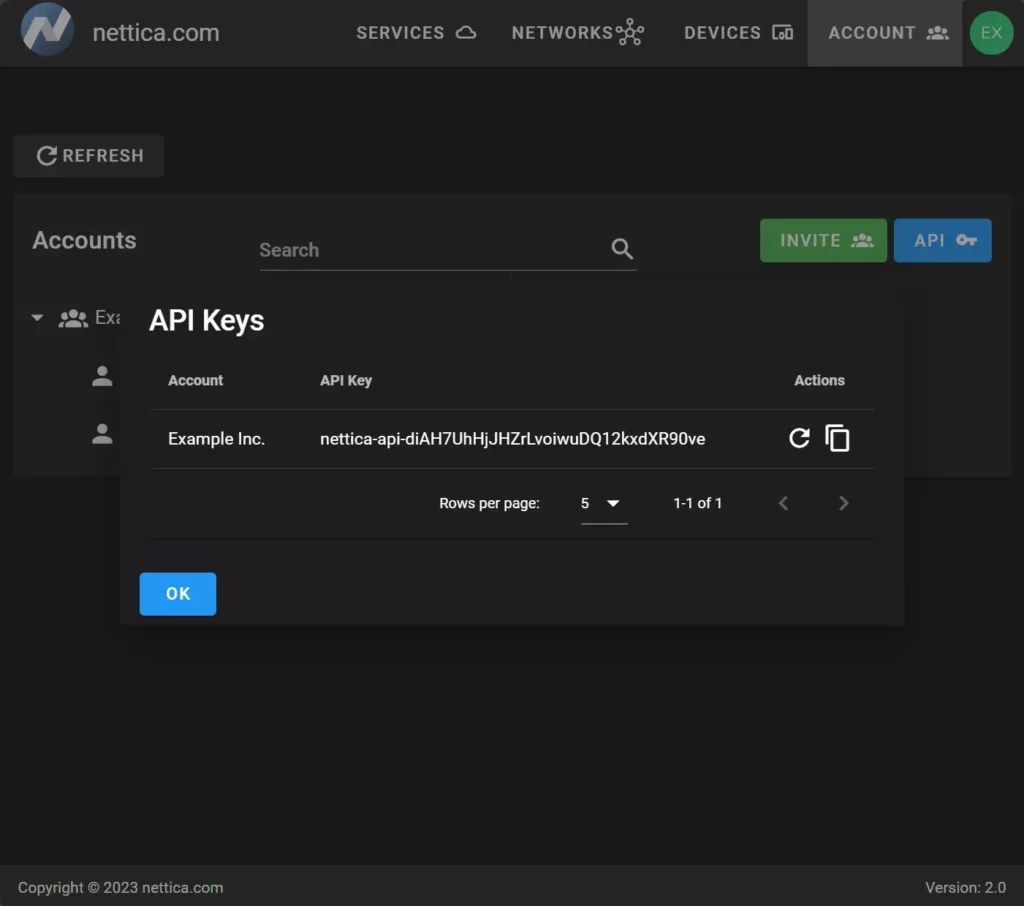Introduction
An Application Programming Interface, also known as an API, is the way two systems communicate with each other. Nettica is well known for its APIs. We introduced our first one back in 2004, the Nettica DNS API, long before APIs were common. It was an overwhelming success and critical to the success of the company. We build fast, scalable APIs that literally make the world go round. And we have now published the Nettica VPN API, available to all customers. You can now programmatically build and manage virtual networks with a straight-forward RESTful API.

Documentation is available at https://my.nettica.com/api/docs/index.html
You have everything you need, including the ability to test the API directly in a web browser through swagger, using the API Key from your account. You can find that key on the Accounts page:

API Details
The Nettica Admin was built with this API. It is a RESTful JSON API written in golang. It will emit eTags for computationally expensive calls, which must be respected. However, most calls are not computationally expensive.
API Example
Here’s a simple example written in python:
# This program monitors your Nettica VPN connections and
# sends an email if endpoint connections are down
#
# It utilizes the Nettica API at https://my.nettica.com/api/docs/
# and the Python Requests library. To install the Requests library
# run the following command: pip install requests
#
import os
import sys
import time
import smtplib
import subprocess
from email.mime.text import MIMEText
import requests
# Set the email addresses
fromaddr = '[email protected]'
toaddrs = '[email protected]'
# Set the email message
msg = MIMEText('Nettica: Your device %s with VPN %s is down')
msg['Subject'] = 'Nettica VPN Alert'
msg['From'] = fromaddr
msg['To'] = toaddrs
# Call Nettica API to get the status of your VPN connections
# You will need to replace the API key with your own
# You can get your key from the Nettica Admin web site
# at https://my.nettica.com/account
# Get the key from the environment
key = os.environ.get('NETTICA_API_KEY')
if key == None:
# If the API key is not set in the environment, check args
if len(sys.argv) > 1:
key = sys.argv[1]
else:
# If the API key is not set in the environment or args, exit
print('You must set NETTICA_API_KEY in the environment or pass it as an argument')
sys.exit(1)
# Create a notify map so we don't send multiple emails
# for the same device
notify = {}
# Call the API to get the status of your VPN connections
# Create a new request
# Set the request URL
Url = 'https://my.nettica.com/api/v1.0/device'
# Set the request headers
headers = {'Accept': 'application/json',
'Content-Type': 'application/json',
'X-API-KEY': key }
# Loop forever
while True:
# Make the request
r = requests.get(Url,headers=headers)
# Check the response status code
if r.status_code != 200:
print (r.text + str(r.status_code))
sys.exit(1)
# Get the response data
devices = r.json()
# The results is a list of devices and their associated VPNs.
# Loop through the list and check the status of each VPN
for device in devices:
for vpn in device['vpns']:
if (vpn['current']['endpoint'] != '') and ('lastSeen' in device):
print( device['name'] + ' ' + vpn['name'] + ' ' + vpn['current']['endpoint'] + ' ' + device['lastSeen'])
now = time.time()
parts = device['lastSeen'].split('.')
lastSeen = time.mktime(time.strptime(parts[0], "%Y-%m-%dT%H:%M:%S"))
if (now - lastSeen) > 300 and notify[device["id"]] == False:
print('Sending email')
# Set the message text
msg.set_payload('Nettica: Your device %s with VPN %s is down' % (device['name'], vpn['name']))
# Send the email
server = smtplib.SMTP('localhost')
server.sendmail(fromaddr, toaddrs, msg.as_string())
server.quit()
# Put the device into a notify list so we don't send multiple emails
notify[device["id"]] = True
else:
# The device is back up, send an email
if device['id'] in notify and notify[device["id"]] == True:
msg.set_payload('Nettica: Your device %s with VPN %s is back up' % (device['name'], vpn['name']))
# Send the email
server = smtplib.SMTP('localhost')
server.sendmail(fromaddr, toaddrs, msg.as_string())
server.quit()
notify[device["id"]] = False
# Wait 60 seconds before checking again
time.sleep(60)More Information
Getting Started with the Nettica VPN Service
Nettica Overview and Architecture
Coming Soon: Script examples for common tasks in our GitHub repo
